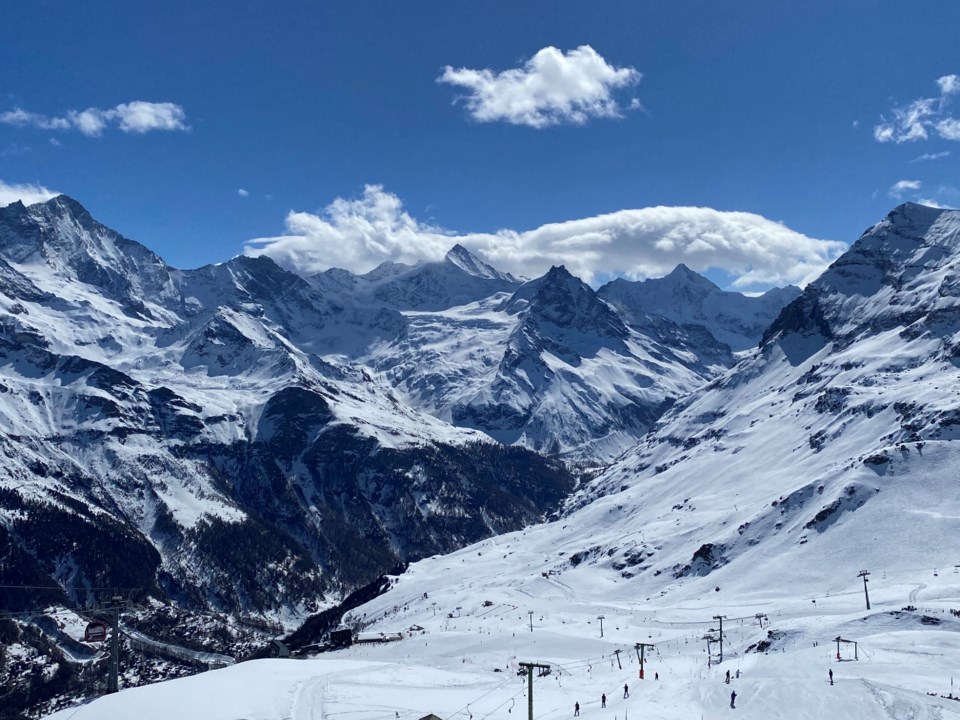While most people have clearly moved on and don’t really want to hear any more about snow, here’s the thing: I hate the end of ski season; always have and still can’t shake off my annual disappointment.
Yes, I’m one of those who’s never ready to let it go. Someone who, when living in Ontario, was always up for a spring-ski road trip. Whether it was to Whistler, the Rockies, the Chic Chocs of Gaspé or even New Hampshire’s Tuckerman Ravine, I had no trouble rustling up a handful of hardcores to join and have their “driving eyes drip like sweaty palms, reaching for cold beer” (as one more literary acolyte once put it). And that was just to make turns in April! Indeed, it was the prospect of an even more extended ski season, through May and, once upon a time, summer, what lured me to Whistler in the first place—being able to go up the mountain for a couple hours on a beauty day in mid-July never got old and I miss it.
That summer skiing no longer exists in Whistler and abundant snow is left to languish in the alpine once the mountain closes doesn’t sit well with me. In self-directed inquiry as to why this might be, the reason appears to be that because spring delivers so much of the best of skiing—sunny days, stellar views, low crowds, no lines, and a great vibe among and between both riders and mountain employees—you wish it lasted forever. Although the more-or-less consistent freeze-thaw conditions can demand judicious timing, and the death-before-download ethos often needs recalibration, there’s just so much less to worry about.
Spring skiing on Blackcomb this year was good, and I made the most of it. Glorious days, with smooth skiing underfoot and the air-freshener phenols of evergreens constantly wafting past my nostrils. Gazing out and around the Spearhead and its glacial mantlepieces from the higher alpine perches, it was hard to imagine winter had any intention of saying farewell. And my god, all that snow going to waste on Whistler Mountain!
Yeah, I know it doesn’t make economic sense to stay open any longer than is already the case at North American resorts, but I sure wish money wasn’t the sole arbiter, or for running more lifts more often as they do in Europe, where the price of a lift ticket ensures you have access to the entirety of skiable terrain, all the time. I mention this because I actually started my spring ski season this year in Switzerland, in mid-March.
While we think of March as late winter and don’t really label anything “spring” until April, things are different in parts of Europe. When I first started going to the Alps it was usually late March or early April, and still quite reliably winter-like, with good powder and occasional big storms that would dump metres of snow. (Indeed, France, Italy and Switzerland unexpectedly experienced one of these multi-metre monsters in mid-April—weeks after most ski areas had shuttered). In the past few decades, however, average freezing levels in March have risen many hundreds of metres and most ski towns are in full spring bloom by the month’s end if not weeks before. The high alps of Switzerland will still hold snow above 2,000 metres but you’d never know it to travel through the lowland staging grounds for storied resorts. And so I wasn’t surprised that a mid-March trip had delivered spring skiing conditions of hot, sunny days and mostly melting pistes in Andermatt, Mürren, and my final destination, the esoteric Val d’Anniviers.
Located in the heart of Valais and reached only by a hair-raising road, Val d’Anniviers is home to the villages of St-Luc, Chandolin, Grimentz, and Zinal. Once four ski areas, these have merged into two cross-valley behemoths with 220 kms of piste, the majority of which sits between 2,000 and 3,000 metres—the larger Grimentz-Zinal, where global alpine teams converge for training in November, and sun-soaked St-Luc/Chandolin.
True to their roots, the Anniviards have preserved both heritage and environment. Traditional architecture of wooden chalets, shingle roofs and cobblestone streets reflect the valley’s cultural identity. Grimentz, lowest at 1,570 metres, charms with flower-lined streets and its old village. Nestled at 1,670 metres at the foot of the Imperial Crown—five peaks over 4,000 metres—Zinal is another gem with breathtaking panoramas. Likewise, St-Luc, set at 1,650 meters on the other side of the valley, offers similarly dizzying views and is nicknamed “Station of Stars” for its small observatory, planetarium, and Planetary Trail. Finally, perched at 2,000 metres, Chandolin is one of the highest year-round inhabited villages in Europe.
Despite the altitude, in mid-March spring had long since arrived, and the tree phenols were mixed with cow dung. Yet the skiing was still insanely good, with everyone—parking lots were packed on a Saturday—reveling in the weather and a chance to make a few runs before hitting one of the abundant patios in the towns. With a hard-charging local guide, I skied more in two days than I would have in a week at home. I felt like I was on one of those hastily convened spring ski trips with my Ontario buddies, enjoying the best of the mountains.
This time, I suppose I can partially blame the stellar spring skiing I started with on the attitude I carried home: I’d still wanted it to last forever.




